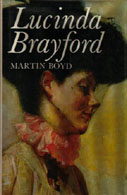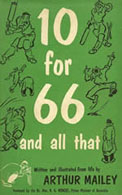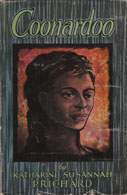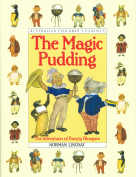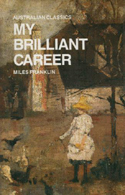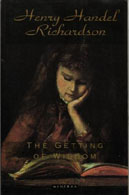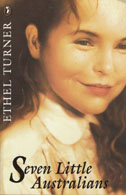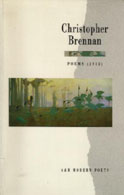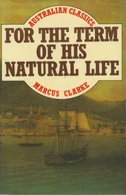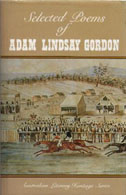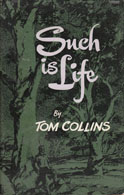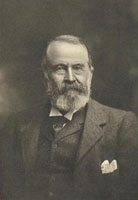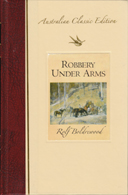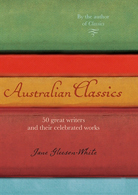Whichever way you look at it, Robbery Under Arms has one of the great Australian novel openings:
My name's Dick Marston, Sydney-side native. I'm twenty-nine years old, six feet in my stocking soles, and thirteen stone weight. Pretty strong and active with it, so they say. I don't want to blow -- not here, any road -- but it takes a good man to put me on my back, or stand up to me with the gloves, or the naked mauleys. I can ride anything -- anything that ever was lapped in horsehide -- swim like a musk-duck, and track like a Myall blackfellow. Most things that a man can do I'm up to, and that's all about it. As I lift myself now I can feel the muscle swell on my arm like a cricket ball, in spite of the -- well, in spite of everything.
The morning sun comes shining through the window bars; and ever since he was up have I been cursing the daylight, cursing myself, and them that brought me into the world. Did I curse mother, and the hour I was born into this miserable life?
Why should I curse the day? Why do I lie here, groaning; yes, crying like a child, and beating my head against the stone floor? I am not mad, though I am shut up in a cell. No. Better for me if I was. But it's all up now; there's no get away this time; and I, Dick Marston, as strong as a bullock, as active as a rock-wallaby, chock-full of life and spirits and health, have been tried for bushranging -- robbery under arms they call it -- and though the blood runs through my veins like the water in the mountain creeks, and every bit of bone and sinew is as sound as the day I was born, I must die on the gallows this day month.
We know right from the start what we are getting into here: a novel of bush-rangers, crime, and, hopefully, high adventure. Our narrator, Dick Marston, is stuck on death-row waiting his execution which is due in a month from the time the book starts. To pass the time, and to keep his mind off his coming fate, he takes to writing his life story. And this is what comprises the bulk of the novel.
Marston is a country lad with a mainly-absent father, and a mother, sister Aileen, and younger brother Jim, all living and scratching out an adequate, if bare, existence on a country farm in New South Wales. At the start of the book we're not sure of the actual real-time frame of the novel's setting but we can guess it's some time in the mid 1800s - which is later confirmed as starting in the late 1840s. The father has fallen in with a criminal set who make their money from cattle-duffing - altering the brands on cattle and selling them for illegal profit - and horse-stealing. By the time they reach their late teens both Dick and Jim have helped their father with this activity and within the first 80 pages of the book have been completely won over to the criminal life. Chief among their father's associates is Captain Starlight (supposedly based on the real-life bushranger Captain Moonlite), a charismatic, intelligent gentleman who has taken to crime with some relish. Starlight has evaded capture over the years due to his knowledge of a country hideout called the Hollow. This is basically a "hidden valley", probably in the Great Dividing Range, well-watered with good natural pasture and almost impossible to find. It reminded me somewhat of The Hole in the Wall which featured in the Newman/Redford film "Butch Cassidy and the Sundance Kid", and is used for a similar purpose: a place to rest up and agist any stock they may have happened to steal.
The first major exploit of the book concerns the theft of a large number of cattle from a nearby station - the number is variously described as being between a thousand and eleven hundred. The cattle are rounded up by Starlight's gang, the brands are altered where required and the whole herd transported overland to Adelaide where they are sold at auction for a rather handsome profit. This whole exercise takes a fair degree of planning for the group with the droving alone taking upwards of three months to complete. The auction proceeds without a hitch and the men all depart Adelaide to separate parts, with the Marston boys taking a steamer to Melbourne while Starlight decamps to New Zealand. After a few months Dick and Jim find themselves back home in New South Wales where they receive the news from their father, just before Christmas, that Starlight has been captured returning from Australia from New Zealand. The boys are warned to get clear but remain at home with their mother hoping to see out the festivities. It proves to be a mistake. Dick is captured by the police - Jim escapes fortuitously - and is sentenced to five years in jail; Starlight gets a sentence of seven years at the same trial.
Boldrewood goes to some pains in the first half of the book to show how conflicted Dick Marston is with the life he has now chosen. In almost every chapter he laments his decision to associate himself with his father's life and with Starlight, and the manner in which he corrupted his younger brother; and his sister is always trying to steer him straight and into the arms of a young woman living on a nearby property. This becomes rather over-repetitive and I wonder if this was a product of the initial serialisation of the work, with the readers demanding some sort of moral tone from a character who, while being a criminal, is shown in a rather flattering light. Or maybe I'm reading more into it than was originally intended, using a modern perspective rather than a nineteenth-century one.
The question that is raised here is how do we read classics of this sort? How much are we willing to forgive in terms of prose style and characterisation, sentimentality and pathos? I believe we can only read these works as they are presented. Attempting to approach them as an original reader is impossible. A classic will stand the test of time if it talks to readers across different periods. We in the 21st century may not read Robbery Under Arms for exactly the same things as did its 19th-century readers - though I'm sure some of the book's qualities apply equally to both - but if it supplies a similar sense of enjoyment then it has made its mark.
You can read more about the book on Wikipedia, which includes a link to the full text of the novel.
The novel is also available on Project Gutenberg.
